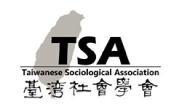4.重探高等教育科系性別隔離的影響因素:技職與學術取向教育之對比(Accounting for Sex Segregation in Taiwan Higher Education: Differen
2018-08-20
| 主題 Subject | 臺灣社會學刊 |
| 標題 Title English abstract |
重探高等教育科系性別隔離的影響因素:技職與學術取向教育之對比(Accounting for Sex Segregation in Taiwan Higher Education: Differences between Vocational and Academic Sectors) |
| 描述 Description | 關鍵詞:高等教育、性別隔離、女性比例、增權、技職教育、Higher education、gender segregation、empowerment、vocational education 摘要:既有文獻指出高等教育之結構分化與性別隔離程度密切相關,另一方面,國內文獻則指出就讀人口的女性比例及學科領域發展,是臺灣科系性別隔離的兩大影響因素;然而,在探討相關因素時,教育體系之結構因素卻不曾被納入考量。關鍵影響因素對層級不同、取向不同的教育部門未必有相同的影響。本研究分析1982至2009年「教育部統計資料」中,高等教育各層級各系所之畢業生人數資料,試圖針對既有結論做一修正。一方面,在區分學術與技職取向教育之後,我們呈現了高等教育各層級的女性比例歷年變遷,以及具性別色彩之學科領域的長期變化趨勢;另一方面,本分析進一步發現,「女性比例變化」與「性別色彩科系擴張(或縮減)」這兩項因素對不同取向的教育部門,具有相當不同的影響。兩點結論簡述如下:一、雖然女性所占比例增加可降低性別隔離程度,證明女性教育機會之改善具有外溢效果,然而這項效應只出現在學術取向的教育部門中,對技職取向教育並無作用。換句話說,即便女性於技職取向教育中的所占比例增加,也無法降低整體性別隔離程度。二、較具性別色彩的學科領域之擴增,只有在技職取向的教育部門才會提高整體性別隔離的程度,對學術取向教育並沒有影響。由於技職取向教育與勞動市場連結緊密,科系較容易呈現濃厚的性別色彩,對關鍵影響因素(女性比例)的抗拒較強,其性別隔離也更容易受到領域相對規模的變化所影響。本文次要貢獻尚包括:完整呈現各層級高等教育的性別隔離長期趨勢,文末亦針對科系選擇的性別差異做跨領域的文獻整合與綜合評述。 頁次:151-199 |
| 形式 Form | 文字、單期 |
| 來源 Origin | 臺灣社會學刊 |
| 關聯 Relation | 是…的一部份:台灣社會學刊第48期 |
| 英文摘要 abstract | Accounting for Sex Segregation in Taiwan Higher Education: Differences between Vocational and Academic Sectors Wan-chi CHEN Department of Sociology, National Taipei University Ya-lin SYU M.A. in Sociology, National Taipei University Abstract Previous research suggests that degree of gender segregation in fields of study in Taiwan is mainly influenced by women’s representation in higher education and changes in the scale of fields of study. However, structural factors have never been taken into consideration, even as structural diversification in higher education increases. Using data on tertiary degrees earned by Taiwanese men and women in all academic fields from 1982 to 2009, we re-examined determinants of gender segregation. Results from regression models indicate that while women’s representation in higher education and changes in the scale of fields of study are important factors, the ways they influence gender segregation are not the same across educational sectors. In academic-oriented universities and graduate programs, increases in women’s representation reduce gender segregation, with change in scale of fields not exerting great influence. In contrast, in vocational and junior colleges, expansion in traditionally male or female fields of study increases gender segregation—that is, women’s representation exerts very little effect, if any. A likely explanation is the much stronger connection between vocational-oriented education and the labor market, which makes gender segregation in the vocational sector much more resistant to change. Keywords: Higher education, gender segregation, empowerment, vocational education |
| 創作者 Creator | 陳婉琪、許雅琳(Wan-chi CHEN&Ya-lin SYU) |
| 出版者 Publisher | 臺灣社會學會 |
| 貢獻者 Contributor | 數位典藏計畫執行單位:「擁抱社會的軌跡:台灣社會學會學術傳承與社群」計畫 |
| 權利 Right | 已授權 |
| 日期 Date | 出版日期:2011年12月 |
| 格式 Format | pdf檔 |
| 識別碼 Code | 檔名:tsa-tj-048_20111200_0004-0000-p.pdf |
| 語言 Language | 中文 |
| 數位檔連結 Download | ( tsa-tj-048_20111200_0004-0000-p.pdf ) 華藝線上圖書館連結▼ |



